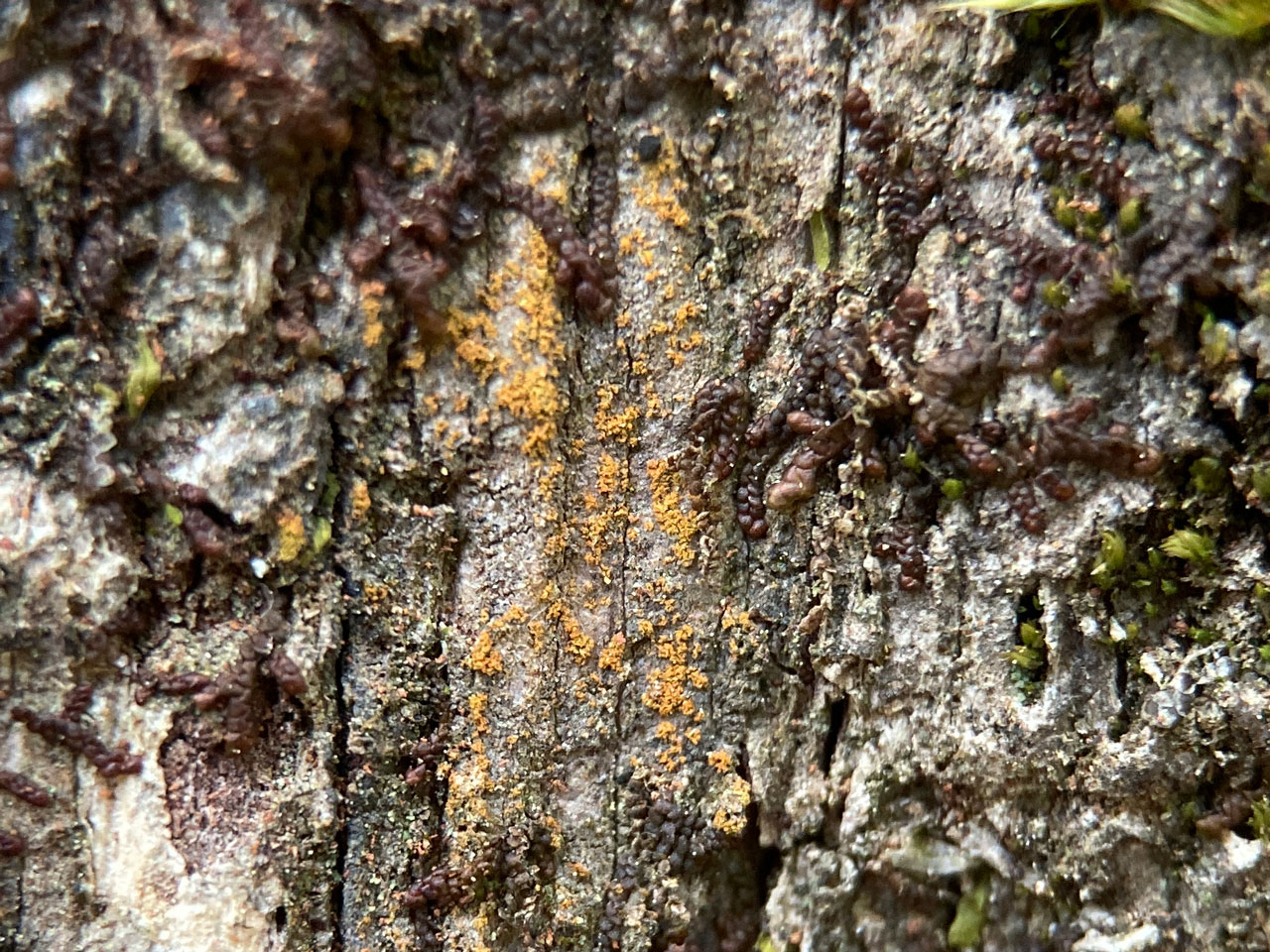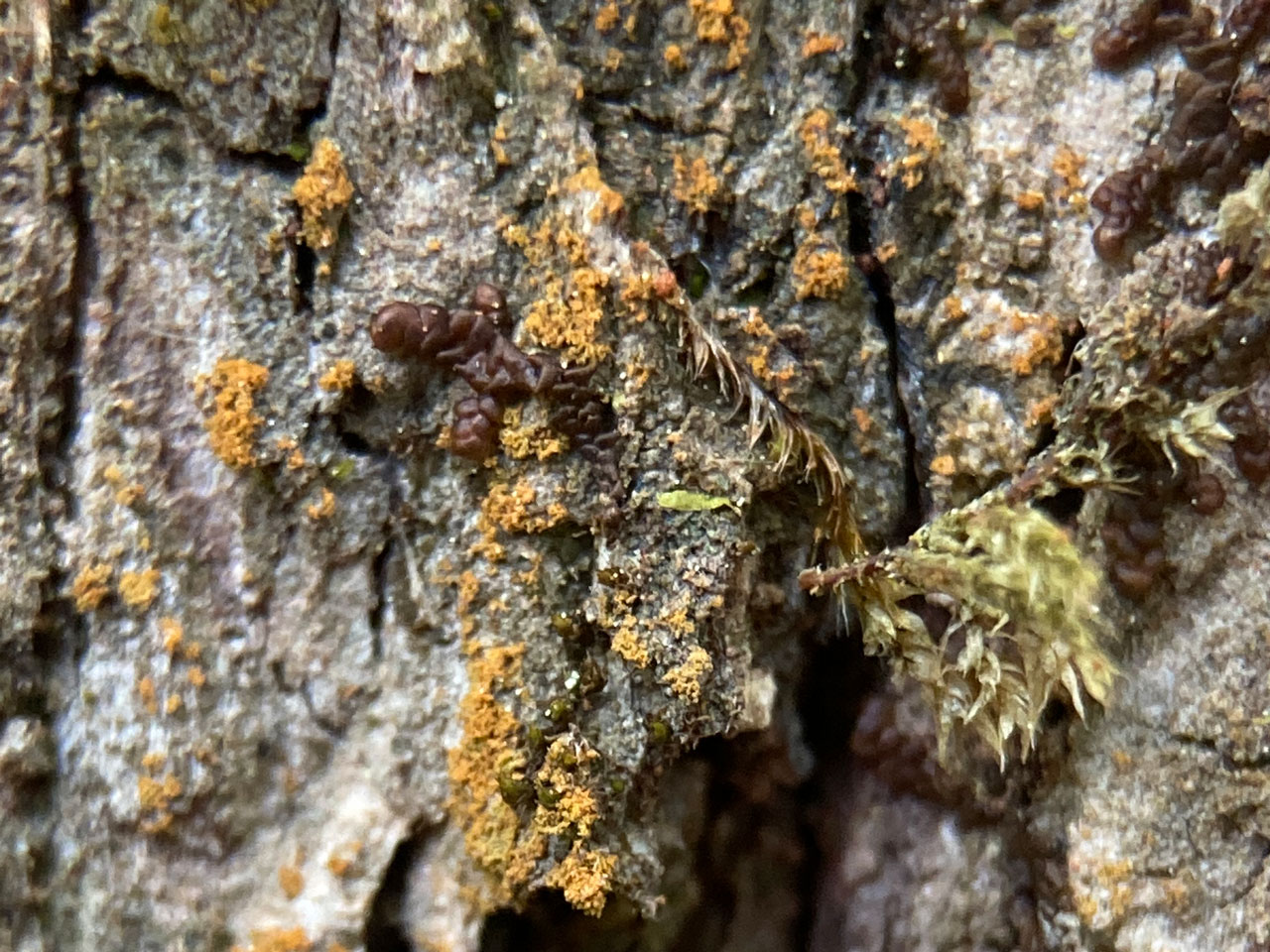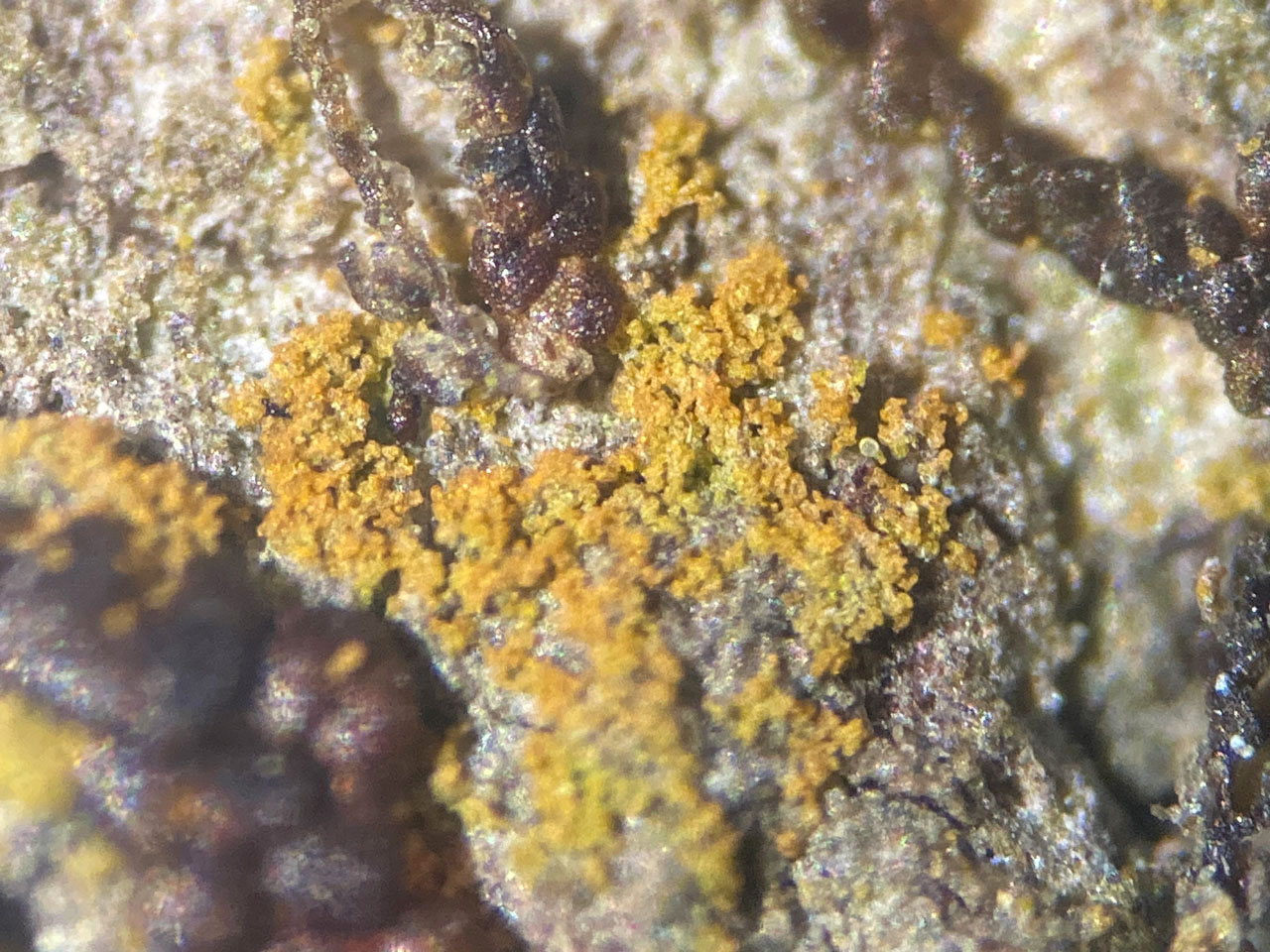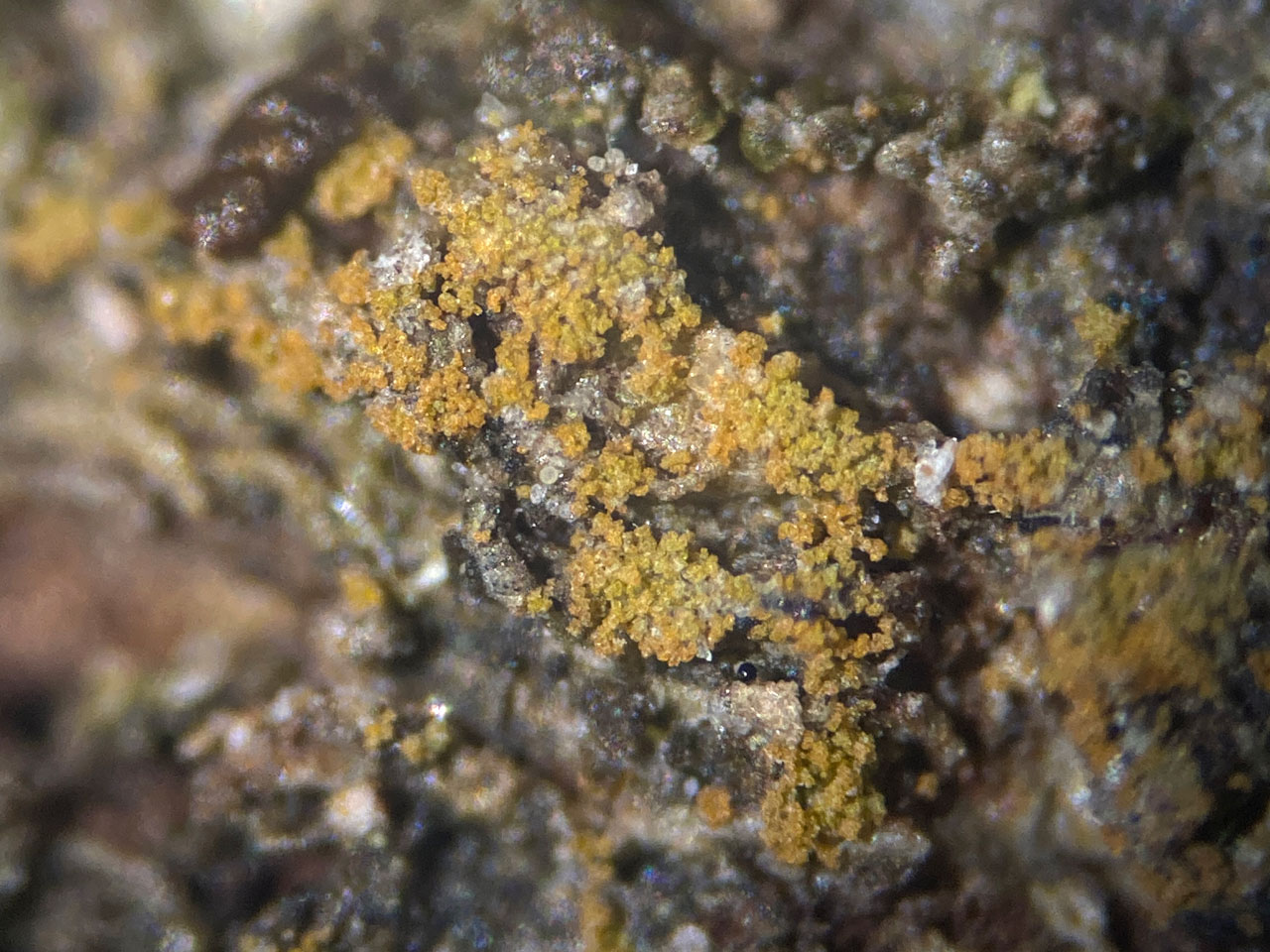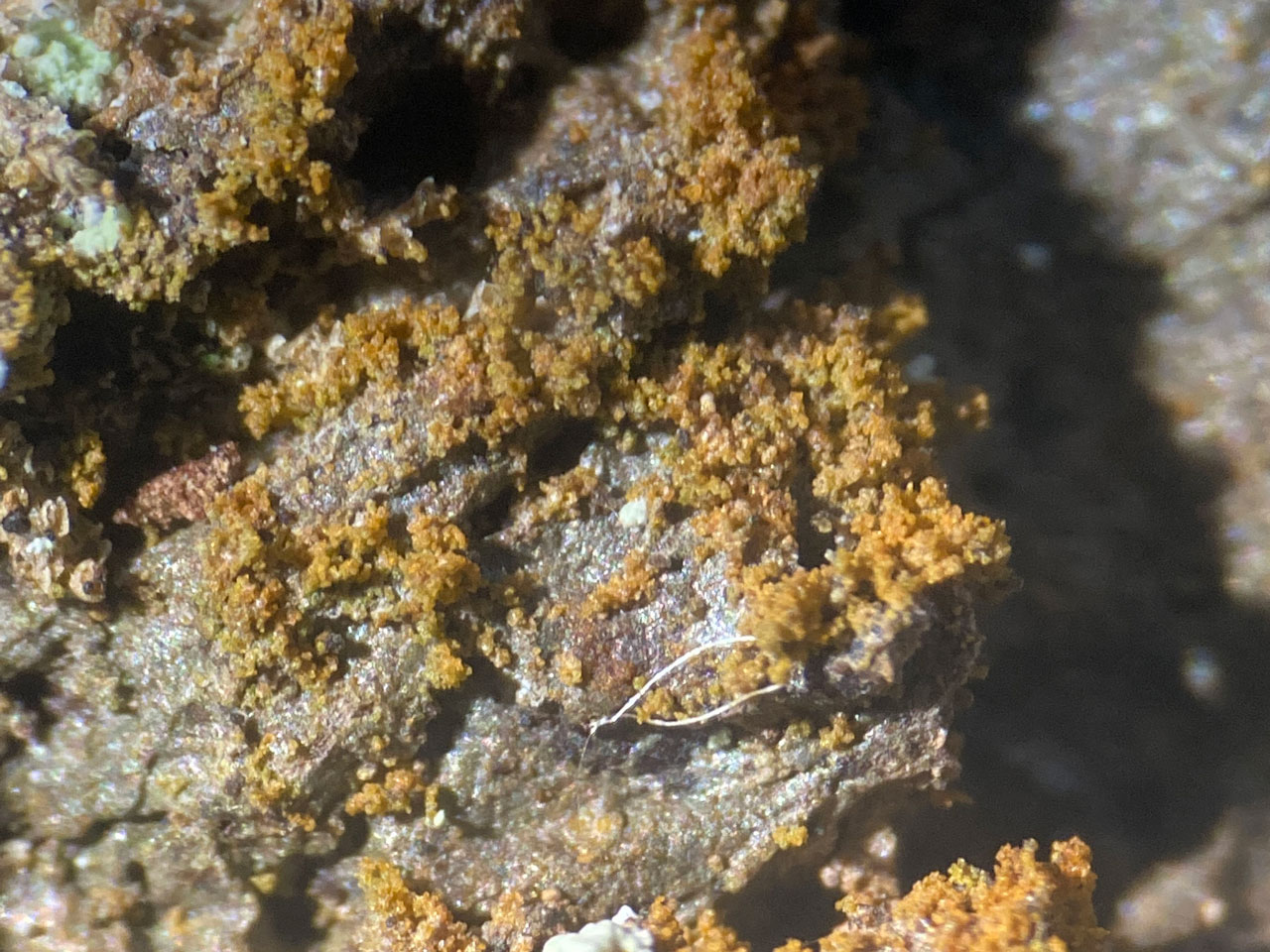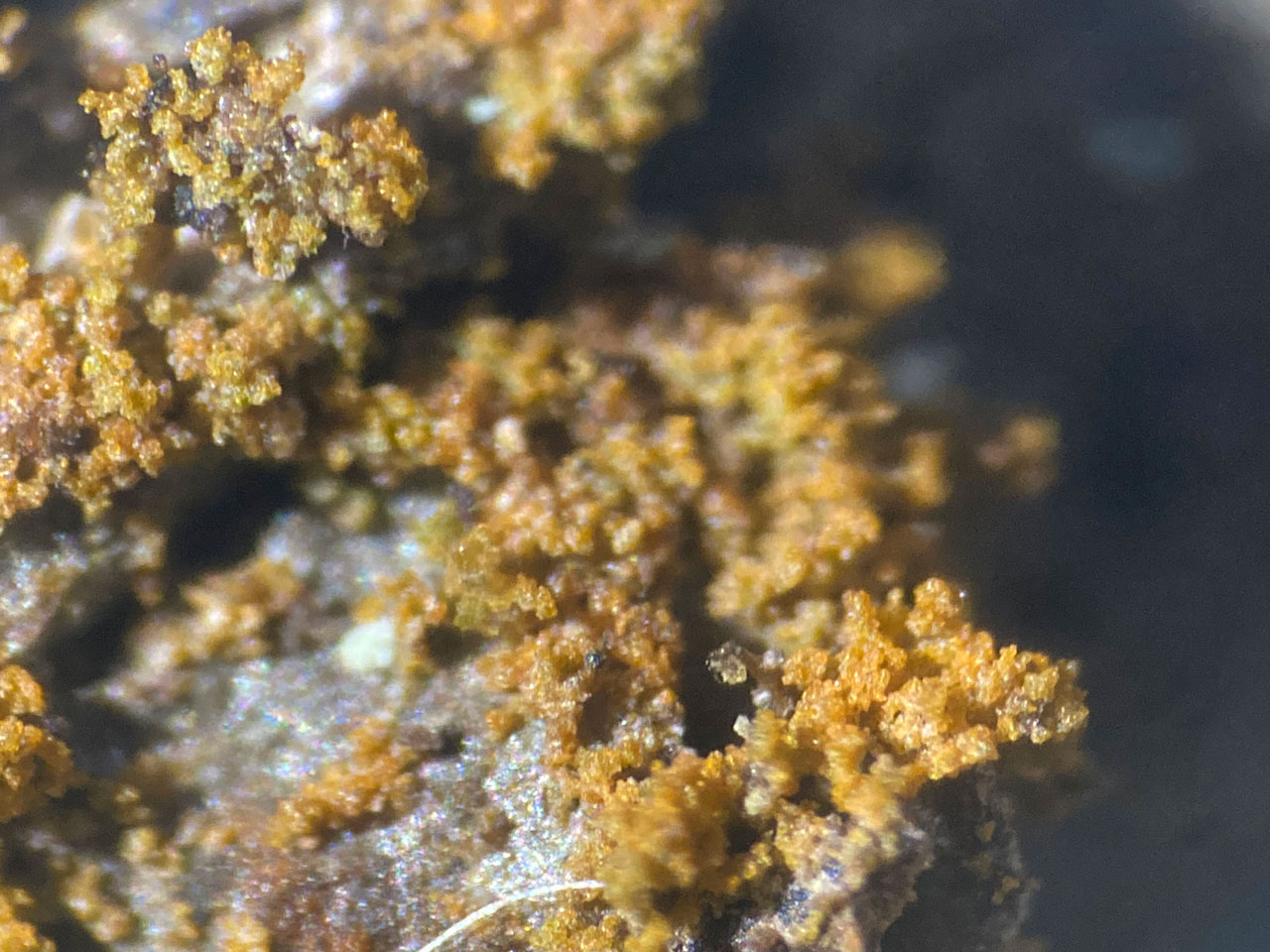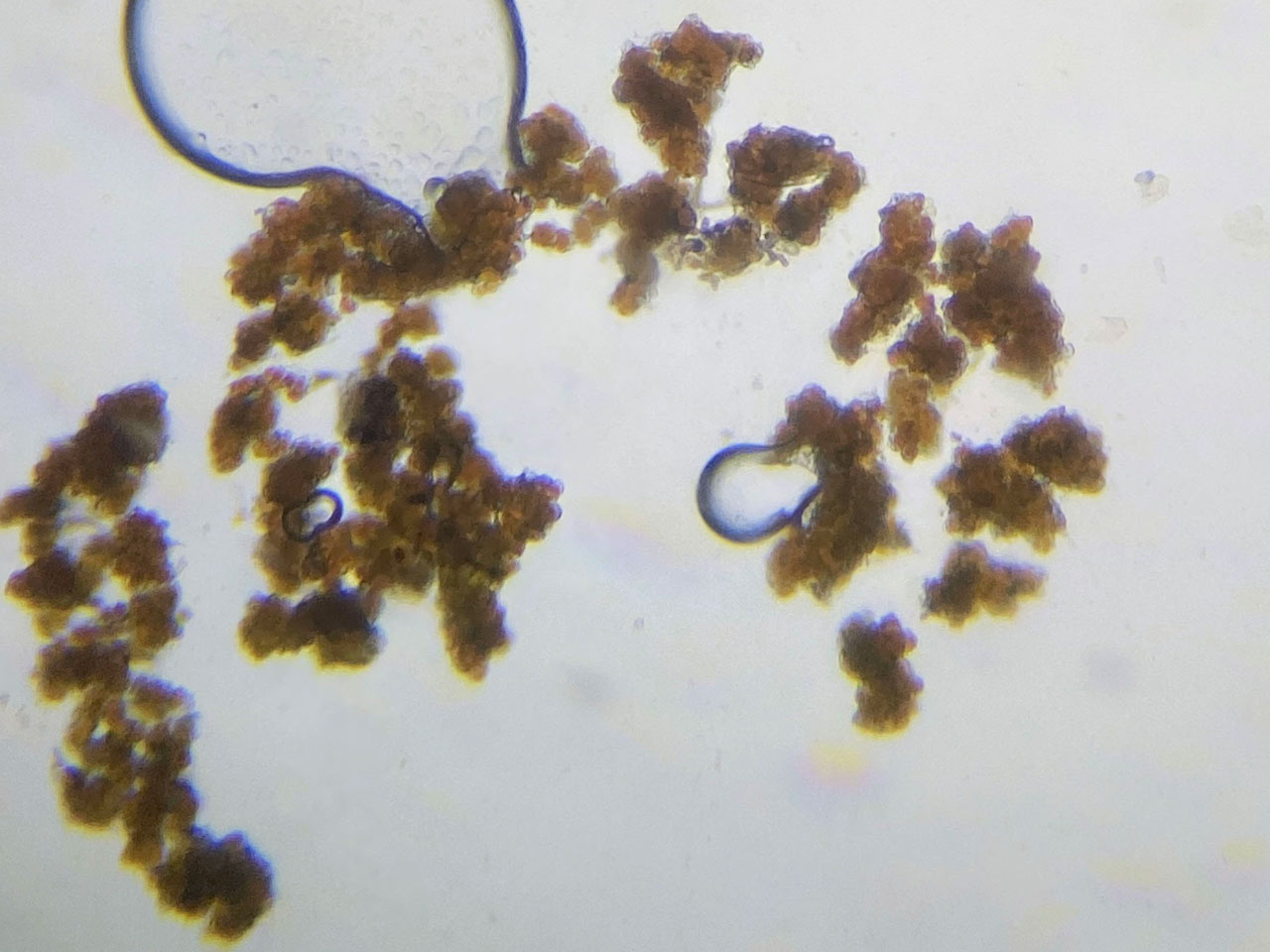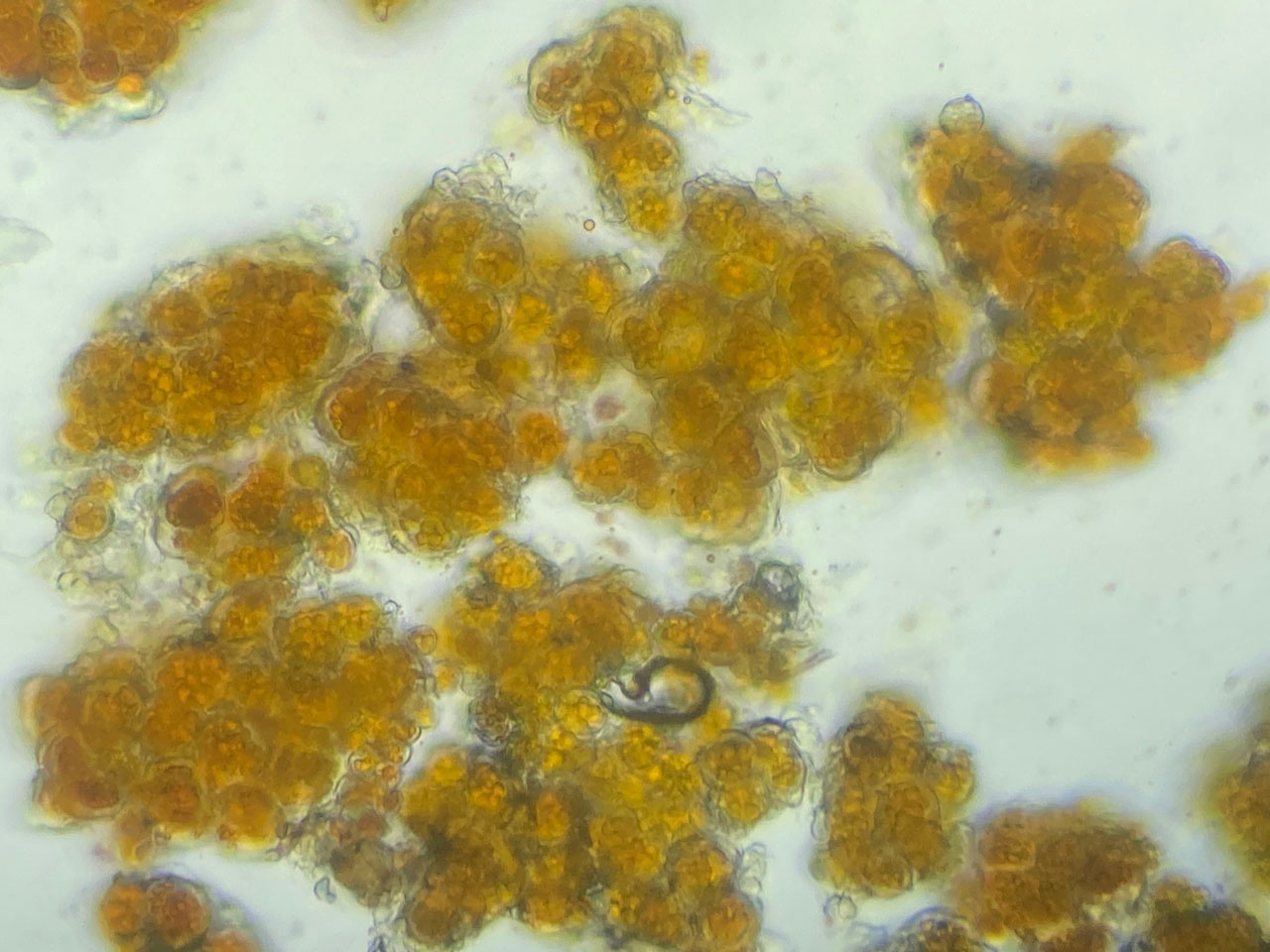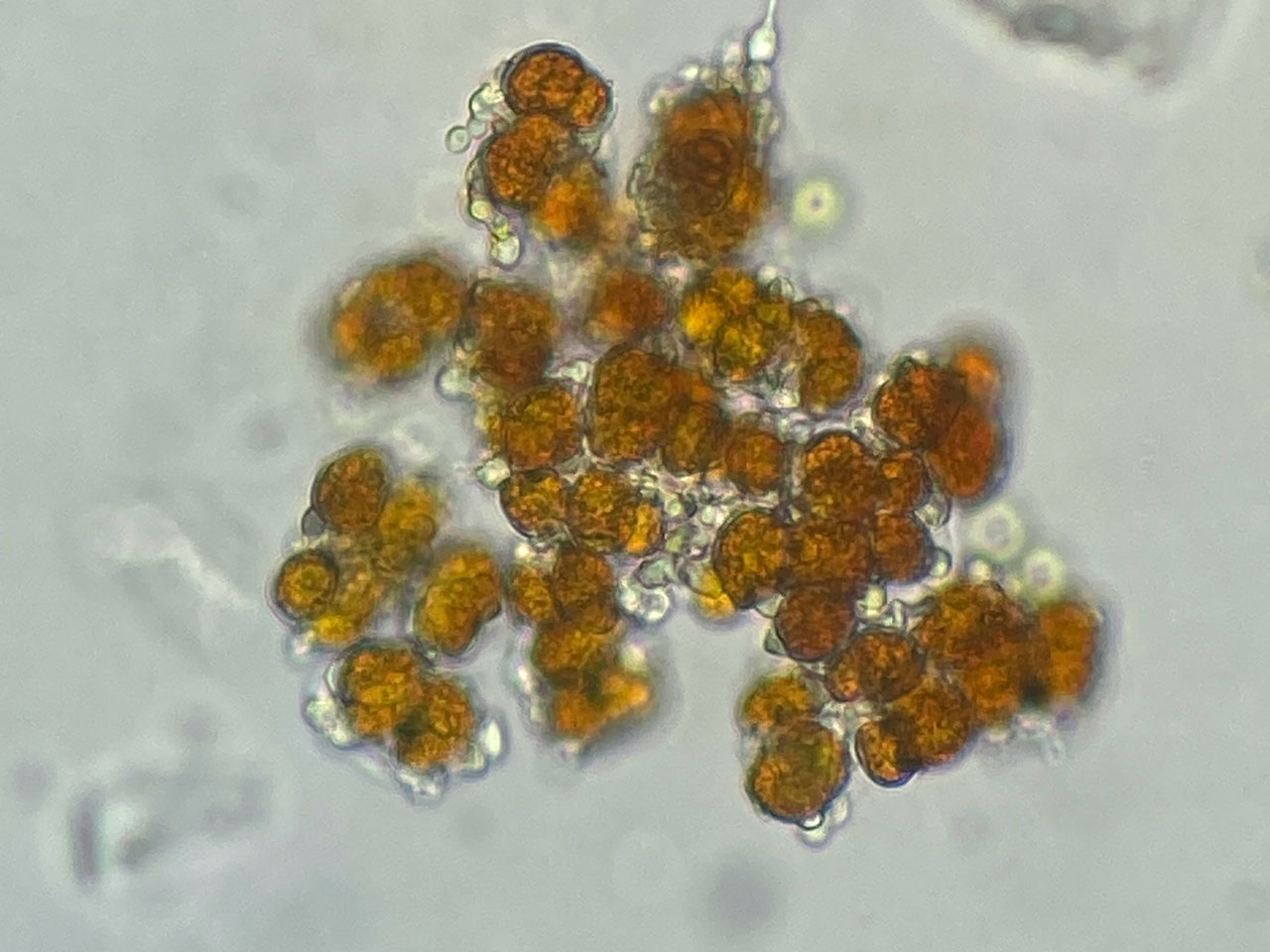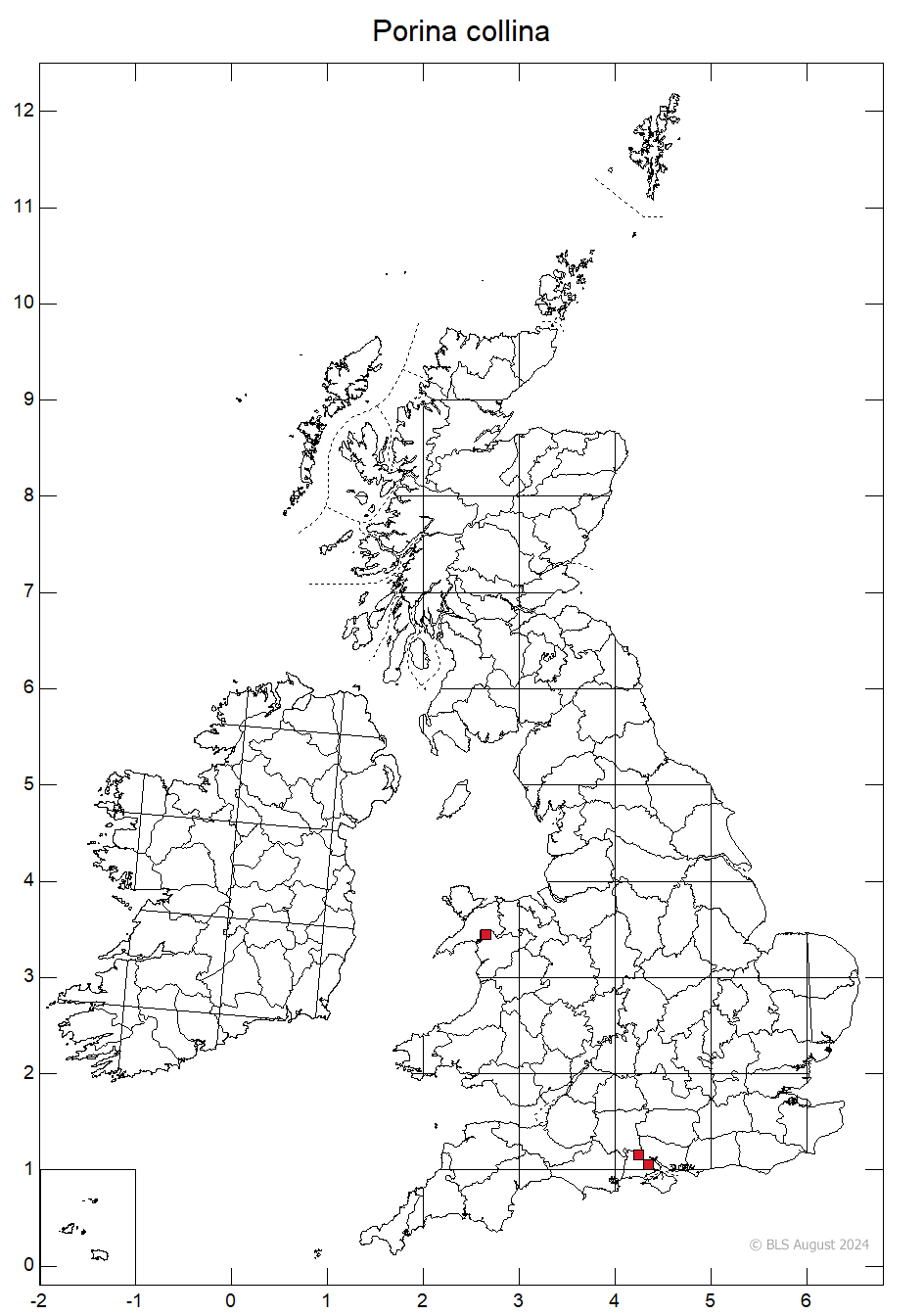Porina collina
Porina collina was described in 2020 (Orange et al, 2020) and is still poorly known. It was first found on slightly base enriched upland siliceous rocks but has subsequently been found on veteran trees in old growth woodland as well. Easily overlooked as an orange sorediate lichen but closely examined it can be seen to have bright orange-brown patches of finely granular to densely coralloid isidia, with the individual isidia not distinguishable. Still very under recorded but, but likely to be rare.
Thallus superficial, thin, light to dull greenish orange-brown, continuous or with a few cracks; isidia abundant, at first arising singly, later confluent, forming bright orange-brown patches, paler at the base giving a two tone effect, which are finely granular to densely coralloid, the individual isidia not distinguishable, soon confluent and sometimes covering much of the thallus. Isidial patches disintegrating in water into irregularly shaped granules 30–150 (–250) × 30–125 (–150) μm, hyphae sparse within the granules, not completely enclosing the photobiont cells. Perithecia black, the base immersed in the thallus, 220–420 μm diam.; involucrellum absent, exciple dark purplish brown, K+ grey to dark grey-brown to dark greenish grey, inner part yellowish, K+ intensifying. Ascus apex rounded, with thickening or a refractive ring. Ascospores 3-septate, 24–43 × 5.5–6 μm.
When perithecia are absent this can be confused with other species with vegetative propagules. Porina rosei has isidia with a distinct cortex with bulging cells, P. hibernica (with which it grows in the New Forest) has more evenly coloured and duller orange, robust isidia 30–100 μm diam. which retain traces of branching in microscopic preparations, P. pseudohibernica [a central and S.E. European species] has rather discrete isidia which are less fragile, and P. multipuncta usually has soredia although these rarely aggregate into very fragile structures which do not form discrete patches. Gyrographa gyrocarpa (on rock) and Zwackhia sorediifera (on trees) have soralia that are often a more vivid orange, and are C+ red.
Originally described from steep or slightly overhanging siliceous rocks in upland situations, perhaps with slight base-enrichment. Subsequently found in wound tracks on old Birches and slight base enriched flushed streaks on acid older Oak in an temperate rainforest ravine and on mildly base rich bark on a post mature Oak in a southern oceanic Sessile Oak – Beech pasture woodland.

Rare or overlooked and likely to be very incompletely known; to 2025 recorded from N. England (Helvellyn), Mid and North Wales, Devon (Dratmoor) and Hampshire (New Forest). Also recorded from Norway and the Czech Republic.
Not evaluated and currently data deficient, but probably at least Notable if not a Red List species.
Orange, A., Cannon, P., Malíček, J., Sanderson, N., Coppins, B. & Simkin, J. (2021). Ostropales: Porinaceae, including the genus Porina. Revisions of British and Irish Lichens 4: 1-12.
Orange, A. Zdeněk Palice, Z. and Klepsland, J. (2020) A new isidiate saxicolous species of Porina (Ascomycota, Ostropales, Porinaceae). The Lichenologist 52: 267–277. link
Text by N A Sanderson, based Orange et al (2021)
